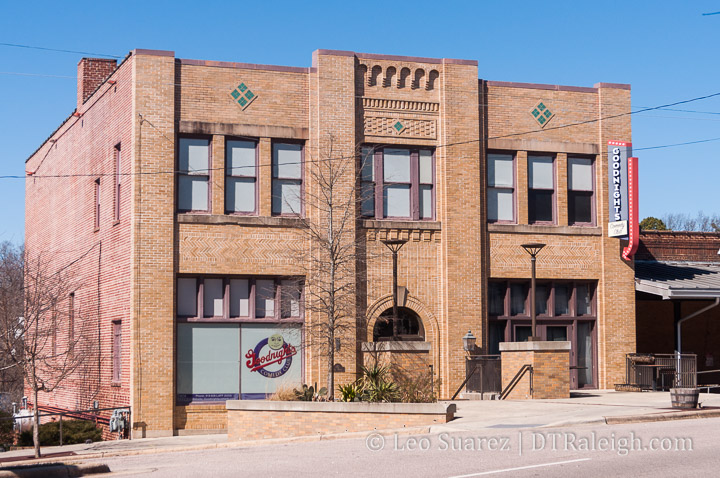I actually appreciate that building, and had a nice view of it from my 3rd floor apartment at Partridge Lane back in the day.
I’ve got nothing against this building, I lived in Oberlin Court for a couple years in college and would walk by this building 7-8 times a month on my way home from Fosters (RIP).
I was just making a comparison of what did make the list and what didn’t, which seems as simple as the property owner going through the process of getting it recognized, if it qualifies.
Another thing about Asheville is it did not recover from Great Depression ( you know one in 1920-30s) until around 2000. in 1990 almost all of downtown and the old art deco building where boarded up and until recently there was no economic reason to demo the old builds and build something new. When I move to mountains in late 1980’s looked at Asheville and decided no way would I want to live there. Very different story now 30+ years later. If where looking to move Asheville would be high on list. Actual I kine of think it worked out for the better, but sure people that lived there in 1940-80’s would not agree.
That’s a good story that demonstrates that there are brand implications and city identity tied up in our historic collection of buildings.
Had this building been closer to the very core of the city, or on a more walkable street, I suspect that it would have already been on the register. It does suffer a bit based on its specific location.
My parents moved to Asheville when I was 4 years old in 1986. Some of the last vestiges of conventional retail were still located downtown like JC Penneys and Woolworth’s, but those stores were pretty run down by that point. The memory of the smell of stale grease from the Woolworth’s lunch counter still lingers in my mind today. And of course then as now, Tops for Shoes was and remains an institution. Beyond that, though, there was little reason to ever go downtown other than the public library.
There is an oft-stated story that Asheville’s depression era municipal debt kept them from participating in urban renewal, and it contains a kernel of truth, but its impact is substantially exaggerated: something of an urban legend at this point. Asheville was definitely not immune to urban renewal. South Charlotte Street was an example, plowing under much of Asheville’s black business district (not unlike what the Durham Freeway did to Hayti) as were the realignment of Woodfin Avenue, the Renaissance Hotel, the Akzona Building, even I-240 to some extent. The cynic in me wonders if the impacts were as limited as they were just because Asheville never had as many black people as other places, whose homes and businesses could be condemned to make room for a highway or whatever.
What is true, though, is that from 1930 to 1980 (a time frame in which Raleigh grew from 37,000 to 150,000) Asheville’s population growth was almost zero, stagnating and treading water at around 50,000, kind of mirroring what happened elsewhere in appalachia for 50 years before its fortunes turned around and growth resumed. No growth basically meant less demand for new construction.
The Pine State Creamery and Dillon buildings are good examples of saving DTR buildings or facades there of…this is an excellent opportunity to lead by design example. 
Coincidence this same pic was used in the #RALtoday newsletter this morning?
I did my walk of the property recently and seeing it again in a new light, the Goodnights building isn’t half bad. What I think folks are really wanting through is that facade. Saving the face of a building isn’t new, I feel like that’s the compromise here. When I look at the back, it’s just a red brick box really. The only example I can think of this happening is over at the Renovation at Historic Ideal Cleaning Co. & Lumsden Bros. Building
Entire facades are saved in MIami Beach, as new buildings are essentially built in the old envelope. Then the old facade is attached to the new building. This has allowed the city to retain its historic charm, while upgrading buildings to address hurricanes, flooding, termites, fires, etc., that come with these aging and often wooden structures.
This facade can be saved a la Dillon. All that has to happen is for the city to compel them to do it.
I prefer if they can save some portion of the original structure but keeping the facade only would probably be enough. This is one of the nicer facades in the city, would be a shame for it to go.
This looks great, but imagine how much greater it would be if they incorporated Goodnight’s… At least the facade
Nice - Seems like they ought to be able to incorporate the building without too much redesign. And the façade should be even easier.
Meh, it’s an ugly box and I see no indication they will try to incorporate the facade. Big L for Charlo–I mean Raleigh.
Can I per-reserve one of those coveted spots over looking the parking deck, train tracks and the prison??
F*** all of this 


I mean, nice looking building. Just wish it wasn’t knocking down a building with such character. Or fit around it.







